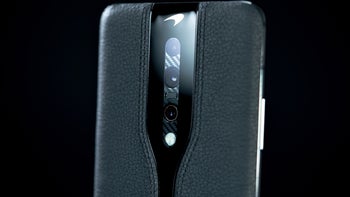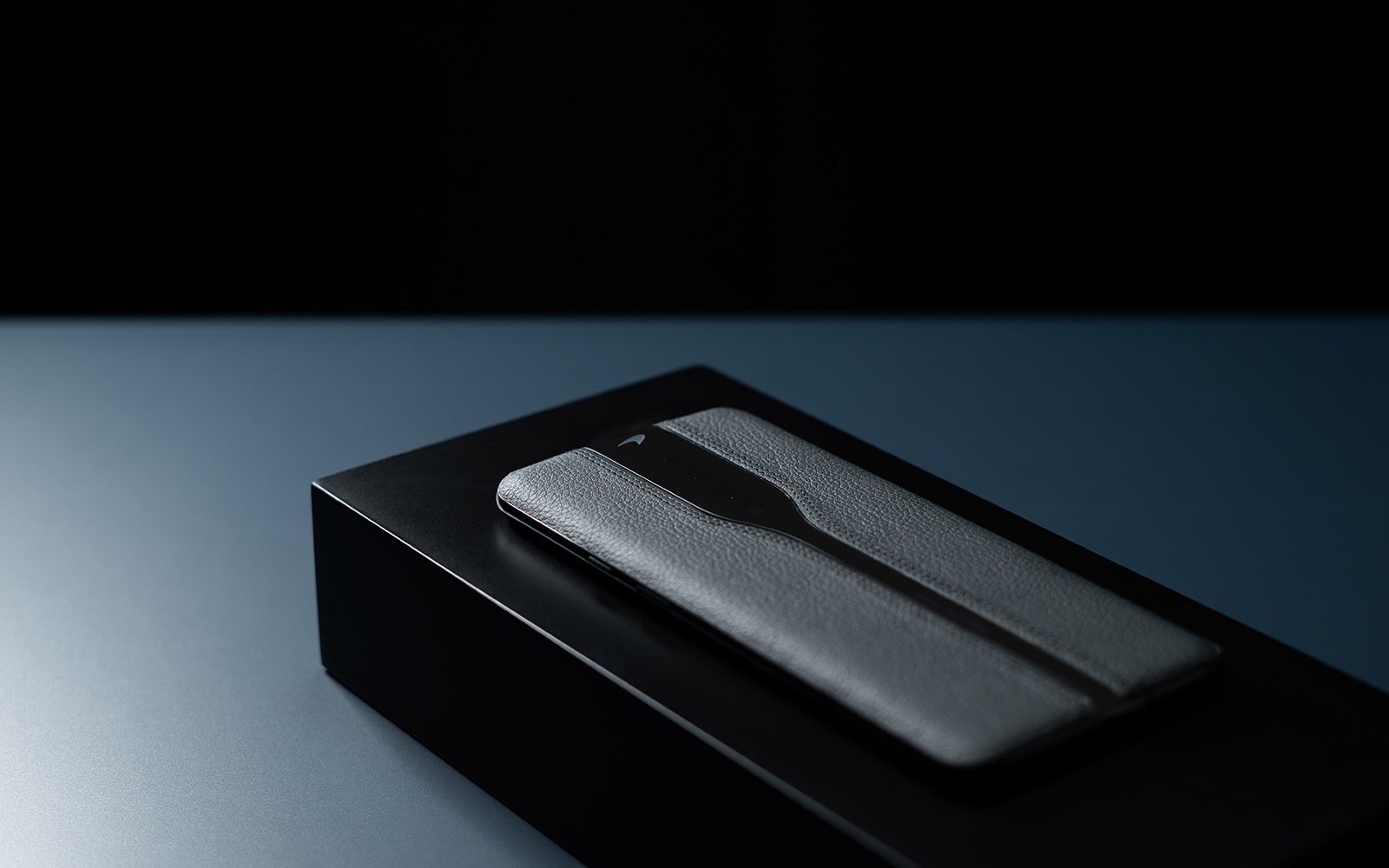OnePlus' invisible camera phone concept looks marvelous in black leather

During the Consumer Electronics Show (CES) in Las Vegas earlier this month, OnePlus unveiled the OnePlus Concept One. The company used a technology known as electrochromic glass that can change the transparency of glass. The phone manufacturer uses it to cover up the rear-facing camera on the concept model with an opaque black finish on the back. In less than a second after the camera app is opened, faster than it takes the camera app to be fully ready, the glass turns clear revealing the lenses on the back of the phone. This hide and seek game with the camera has caught the attention of consumers. The technology also could act as a polarizing filter for the rear cameras to help them deliver sharper, clearer photos in bright lighting conditions.
The version of the OnePlus Concept One that was displayed at CES featured an orange-yellow leather back that is properly called "papaya." Today, an even more stunning version of the OnePlus Concept One surfaced in black leather. And speaking about the concept handset, an interview with Kevin Tao, a member of the company's Industrial Design team, was published today in the OnePlus Forum.
OnePlus will release a mass-produced phone with the invisible camera "when the time is ripe"
The designer pointed out that this is the first time that OnePlus used leather on a phone. And while it sounds like the perfect material for the company to use, Tao says that in the future the manufacturer would prefer to use an alternative material with the same qualities. "This is the first time OnePlus explored leather back design. We believe leather is a material that achieves the premium build quality we strive for, providing a soft touch, while also create a thinner handfeel when compared to glass," Kevin said. "We worked with McLaren on applying the same premium leather that is used on the 720s. In (the) future, if we intend to apply similar back design, we will look into alternate materials that can achieve the same look and feel with leather, while being more environmentally friendly and easier to keep clean in the long run."

Black leather prototype of the OnePlus Concept One
Of course, everyone wants to know about the invisible camera. Not only does the process work quickly, but it also doesn't use much battery power. Tao stated, "The OnePlus Concept One’s Invisible Camera was thoroughly tested and calibrated for speed: it takes only 0.7s for the glass to transition from solid black to fully clear, faster even than the camera itself takes to fully activate. And it uses almost no power. The OnePlus team spent three months tuning and optimizing both the speed and power consumption for the most carefree user experience possible."
Probably one of the questions that Kevin has been asked the most is whether the invisible camera is a technology that could make its way to mass produced handsets. He says, "This concept phone and its camera setup are one experiment in the future of smartphone design, and OnePlus' R&D and product teams are continuing to test and extend the technology behind them. A new technology application requires user and market feedback, and when the time is ripe we will introduce it to the market." And while that does sound promising, as we already pointed out the electrochromic glass can also be used as a Neutral Density (ND) filter for the rear cameras. Explaining what this is, Tao notes, "In photography, such a filter blocks light so that it can enable the smartphone to capture scenes that would have been too bright and overexposed otherwise. Alternatively, it can enable longer exposure shots for some dramatic effects of scenes such as running water."
OnePlus has sure come a long way since releasing the OnePlus One in 2014 and we expect it to release the OnePlus 8 Pro, OnePlus 8 and OnePlus 8 Lite as its first-half flagships for 2020.










Things that are NOT allowed: